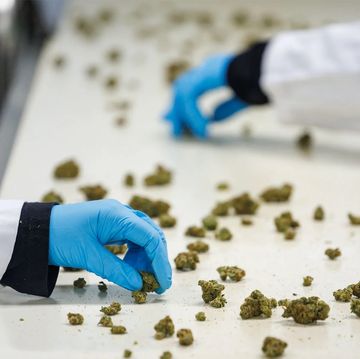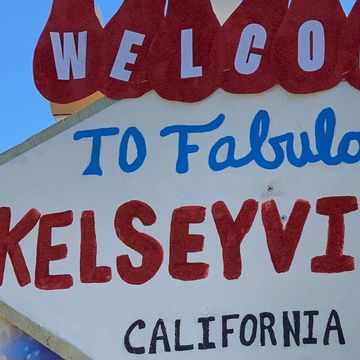Fifty years ago, Ed Abbey led me to the wild Escalante River to stick my finger in the mud of rising Lake Powell, a reservoir on the Utah-Arizona border. This “lake” had been filling with Colorado River water since 1963, when the Glen Canyon Dam was completed by the federal Bureau of Reclamation, giving birth to the impoundment.
Since that introduction, not a season has passed without a conversation—some more serious than others—with activists about removing the dam and draining the lake. My abiding interest in Glen Canyon was fed by Abbey, who, despite mutually cantankerous moments, was my close friend for more than 20 years. He was clear about how he saw it.
“All dams are ugly,” he wrote, “but the Glen Canyon Dam is sinful ugly.”
With the publication of Abbey’s The Monkey Wrench Gang in 1975, the possibility of blowing up the dam and draining Lake Powell entered the folklore of the canyon country, floating above the flood-chiseled slickrock like a summer cloud: it wasn’t clear what was real and what just part of the legend.
But history has caught up with Abbey’s fiction: Today, in 2023, a great drought has descended upon the American West, eclipsing the decades-long scorching that brought the Ancestral Puebloan culture of the Southwest down from the cliff dwellings about 800 years ago. We call it a megadrought; the cause is the warming, drying weather, a consequence of human-caused climate change. This past single wet, cold winter will not reverse the dropping water level in Lake Powell or meaningfully replenish the comparative trickle that represents the Colorado River. It would take a big handful of consecutive high-precipitation years like 2022–23 to recharge the lake. The water level at the Glen Canyon Dam has dropped so low—from about 3,678 feet above sea level in 1999 to about 3,520 feet this year—that the Bureau of Reclamation is worried about generating hydropower, one of its primary justifications for building the dam in the first place.
Power pool and dead pool are names for two water levels at Lake Powell. Power pool is the elevation above which hydropower can still be produced. Once the water elevation drops below 3,490 feet, the dam loses the ability to generate power. Dead pool level, which is more critical, sits 120 feet below that. If the water elevation sinks to 3,370 feet, the dam turns into a liability. Water won’t be able to flow through the dam. Dead pool means there’s no way to release water downstream, where the needs of 40 million consumers, seven states, and Mexico are considerable. These days, a single hot, dry year could drop the water in the Glen Canyon reservoir by a hundred feet or so. Then, all bets are off.
Farther downstream is the largest human-made reservoir, by volume, in the United States, Lake Mead, created by the older Hoover Dam, also on the Colorado, upon which the cities of Las Vegas, Tucson, and Phoenix are highly dependent for water. The Los Angeles Basin gets some too. Lake Mead, like Lake Powell, is at but 30 percent or so of capacity and suffers from over-allocation of Colorado River water.
The Bureau of Reclamation’s proposal is to reengineer the Glen Canyon Dam, drilling through the concrete to try to maintain Lake Powell’s elevation at a level that will enable power generation or tunneling shafts around both sides of the dam to direct water flow to a power plant; the estimated cost is as high as $3 billion. The amount of future power generated could be close to nothing—you can’t count on it. Why the bureau doesn’t look beyond engineering fixes is puzzling.
WATER WASTE
Climate change is what rules our declining water sources. Most species of wild animals that are eligible for an endangered species listing today are in that condition because their habitats are disappearing. Unofficially, but unmistakably, that list could include Homo sapiens.
The warming and drying of the planet is the one issue we cannot duck. If the discussion of the decline of the Colorado River and the fate of the dam is a dress rehearsal for the way we deal with climate change, we indeed are in troubled waters. So far, the Bureau of Reclamation’s proposed fixes involve concrete, a few tunnels, and more engineering. This would lead to quantifying the remaining water as private property and putting a price tag on it. I find these so-called solutions petrifying.
Another approach is to reduce dependence on the Colorado River by tapping into Pleistocene fossil aquifers. During the gas and oil drilling of this past century, extensive freshwater bodies were located, often sealed under desert valleys. Two big projects are located around where I winter in southwest Arizona: one is west of Phoenix, and the second is just across the Nevada border in California, in the eastern Mojave Desert. In both cases, foreign interests have bought up entire desert valleys under which ancient aquifers lie. The groundwater in them is not readily renewable.
This article appears in Issue 24 of Alta Journal.
SUBSCRIBE
In 2015, a Saudi corporation called Fondomonte was given permission to pump unlimited amounts of groundwater in Arizona’s Butler Valley by the State Land Department. The agency, to which the area had been transferred by the federal Bureau of Land Management, leased the land to the corporation for $25 an acre, in a deal the local water boards call corrupt. The State Land Department has failed to ask a basic question: How much water do you use? The Saudi firm mines the fossil water to grow alfalfa that is, in turn, shipped to Saudi Arabia to feed cows. (It’s illegal to grow alfalfa in Saudi Arabia—it uses too much water.) Until this lease came along, the Butler Valley water was supposed to be some kind of backup for the City of Phoenix.
In 1983, a similar deal went down in eastern California, where NASA imagery found that the giant Fenner aquifer extended some 700 square miles between two desert mountain ranges. A British entrepreneur saw the satellite pictures, bought up the land, founded a corporation called Cadiz, and started drilling wells. The company planted crops but sees a much bigger market in selling water from two pipelines to California cities. One pipe would go to the L.A. Basin, where Cadiz would provide water to an Orange County suburb built around a 31-million-gallon artificial lake. In the Atlantic, the manager of the suburb’s water district is quoted sharing a common view of the aquifer. “There’s more in this whole desert valley than in all of Lake Mead,” he says. “It’s out there going to waste.”
The fossil water in those two aquifers that is being proposed to float our sinking boat of drought was itself the result of climate change 12,800 to 14,700 years ago (water kept filling the aquifers until about 10,000 years ago—it can be dated by radioisotopes). This warming period (the Allerød) finished melting the Pleistocene glaciers and left a wetter climate; it also contributed to a major extinction event—the killing off of the great Pleistocene megafauna. Climate change and human overhunting are suspected as driving forces, not unlike today’s deadly duo of climate warming and continued human emissions of fossil fuel gases, kindling the sixth great extinction.
THE HIGHEST BIDDER
These conquests of water embody the same values that got us down toward the bottom of the reservoir in the first place—pushing endless commercial growth on a finite planet. In 2020, the Chicago Mercantile Exchange created a futures market for water, allowing brokers to wager on water scarcity. This is close to the bedrock problem: the identification of water as property and for sale.
Even as water levels in the Colorado basin continue to fall—the volume of flow is not going to fully recharge—it’s likely that a torrent of litigation seeking to parcel out drips from a nearly dry tank will stymie any real solution. In the West, water went from being free and endless to being governed by century-old water-rights laws. Chronology gives California’s older claims contentious legal priority in allocations from the Colorado River. Elsewhere, there is friction among some Indigenous groups: On the lower Colorado, some tribes have very old water rights and stand in line with agricultural corporations. Meanwhile, members of other tribes dismiss this pecking order and say that the water is alive; they talk to the springs whose spirits trickle out and create the desert oases.
Individual states, like Arizona and California, distinguish between surface water and groundwater—like the Colorado River and fossil water. Scientists fear the consequences of taking this distinction into account, as the two water sources do interact. Water agents in California and Arizona think they can plunder the groundwater during dry years, to make up for the over-allotted Colorado River water, without affecting surface water from nearby streams and rivers. Faced with a great drought throughout the West, California is sourcing an estimated 60 percent of its water from the ground; in Arizona, where officials anticipate declining allotments from the Colorado River, that figure approaches 50 percent. A more accurate account of water use would measure estimates of ground- and surface water as related and interdependent sources. It’s hard to know how much to allot if you don’t know what you’re using. The glut of wells drilled around southwestern cities tap into porous gravel deposits through which rivers flow, while deeper wells may tap into the geologically sealed fossil water. These desert groundwaters are a natural fortune and should be protected like emergency national monuments, not used up by irrigators or by anyone living today. The painful rationing of this declining resource should fall equally on all of us.
In short, the current allotment of the Colorado River is at an impasse. The federal government has a mandate to divvy up the water and has asked the seven affected states to jointly propose a settlement. After a second try, six of them—Arizona, Colorado, Nevada, New Mexico, Utah, and Wyoming—came to an agreement this past January. California refused to sign on, largely because it has the oldest water rights and wants to keep them. There’s also disagreement within the states around urban rights versus agricultural development. In Arizona, farmers get about 80 percent of the state’s allocation, which prioritizes vegetable growers in Yuma ahead of urban dwellers in Phoenix. If no agreement among the seven states is reached, the feds could unilaterally decree cuts for all, possibly by this summer. (Editor’s note: At press time, California, Nevada, and Arizona reached a tentative deal with the feds for reduced allocations through 2026.)
Yet the reality is that the drought is not ending. It will continue just as surely as lawsuits between the states, the Indigenous tribes, the federal government, the farmers, and so on will commence. And soon, it will be too late.
HAYDUKE LIVES
For the past five decades, I’ve imagined removing Glen Canyon Dam, draining the lake, and resurrecting the Colorado. I’ve thought it was a wild dream, a beautiful fantasy impossibly distant. Today, I’m not so sure. Maybe we could get the Bureau of Reclamation to use that $3 billion retrofit to instead pull the plug on the dam and restore Glen Canyon.
As the level of Lake Powell recedes, willows are regenerating in the higher drainages of the canyon, and animals are coming back. Inside the canyon, arches are emerging, and prehistoric ruins again reach for the sky. A universe of magnificent rock art crawls back up the grandest sandstone walls anywhere. Glen Canyon is a national park just waiting for us to put up the signs.
The last person alive I know who floated through Glen Canyon before it was flooded was one of the real-life heroes of The Monkey Wrench Gang: Seldom Seen Smith, who lives up around Moab somewhere. A couple of other gang members hang on: Bonnie is in the Bronx or maybe Manhattan, and, above the Escalante, even my own shadow, George Washington Hayduke, can still be seen hobbling along Glen Canyon’s immaculate rims. From his distant desert grave, old Abbey might check in: it’s time to drain the lake and let the river flow free.•
Author, disabled veteran, filmmaker, and naturalist Doug Peacock is the founder and president of Save the Yellowstone Grizzly. Peacock was a Green Beret medic in Vietnam and the real-life model for Edward Abbey’s George Washington Hayduke in The Monkey Wrench Gang.













